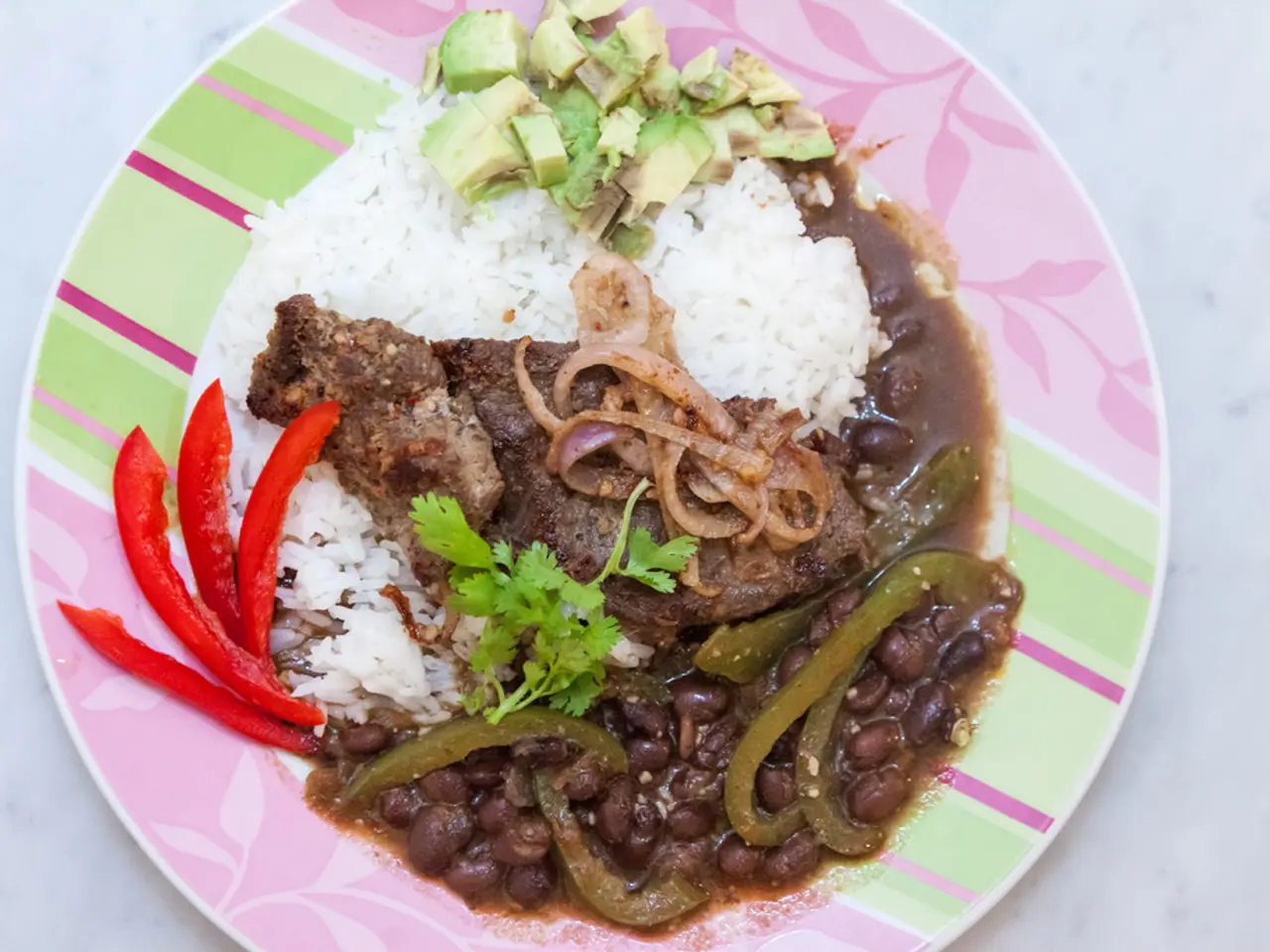Dietary guidelines for vestibular migraines: Consumption suggestions, restrictions, and additional advice
For individuals suffering from vestibular migraine, a significant overlap with migraines exists. This condition affects balance and proprioception, causing dizziness, off-balance feelings, and uncertainty in movements. According to the Vestibular Disorders Association, about 4 in 10 people with migraine develop vestibular symptoms such as dizziness.
In managing vestibular migraine, a low-tyramine diet can provide relief from symptoms associated with tyramine intake. Tyramine, found in certain foods, may contribute to an increase in headaches and migraines.
Foods to Avoid
To follow a low-tyramine diet, it is crucial to avoid foods high in tyramine. These include aged cheeses like blue cheese, cheddar, feta, Gorgonzola, Brie, and other strong-smelling cheeses. Additionally, aged, fermented, smoked meats such as bacon, sausage, liverwurst, pepperoni, salami, corned beef, smoked fish, and other cured meats should be avoided.
Fermented foods like pickled foods such as sauerkraut, kimchi, and other fermented vegetables should also be avoided. Marinated foods, especially those marinated in wine, vinegar, or other acidic substances, can contain high levels of tyramine. Wine and beer, some types of which can contain tyramine, should be limited or avoided.
Additional Tips
Freshness matters when following a low-tyramine diet. Buy fresh foods and cook or freeze them within 24 hours to minimize tyramine content. Avoid storing cooked foods for more than 24 to 48 hours in the refrigerator.
Identifying Triggers and Adequate Nutrition
An elimination diet can be used to identify foods that trigger vestibular migraine. It is advisable to work with a dietitian or doctor to determine the right timeline and ensure a person gets adequate nutrition during an elimination diet.
Safe Foods and Risks
While some foods should be avoided, others are usually safe to eat in small quantities. These include chocolate, foods with autolyzed or hydrolyzed yeast, caffeinated beverages (no more than two servings per day), dried fruit, papaya, avocado, raisins, and figs, Parmesan and Romano cheeses, sourdough bread, home-leavened bread, raw onions, citrus fruits such as oranges and pineapples.
The main risk of dietary changes is that a person may miss out on important nutrients. People who need support to manage migraine should consult a doctor or ask for a referral to a neurologist.
No Cure, but Fewer Migraines
It is essential to note that no specific diet can guarantee a reduction in migraine, and diets will not cure the underlying neurological issues that cause migraine. However, identifying and avoiding dietary triggers may help reduce the frequency of a person's migraine attacks, leading to fewer migraines.
For those who find relief through a low-tyramine diet, it may also reduce the need to use migraine medication and enable a person to live a fuller life with fewer migraine-related interruptions.
Caution for Those with a History of Disordered Eating
Restrictive diets can sometimes lead to an eating disorder or be a symptom of one. People with a history of disordered eating may have a higher risk of relapsing on a migraine diet or any other restrictive diet.
In conclusion, a low-tyramine diet can provide relief for individuals suffering from vestibular migraine. By avoiding certain foods and working with a healthcare professional, individuals may find a way to manage their symptoms and improve their quality of life.
- A low-tyramine diet, avoiding aged cheeses and cured meats, can provide relief for individuals with vestibular migraine, a condition that causes dizziness and off-balance feelings.
- To minimize the tyramine content, fresh foods should be bought and cooked or frozen within 24 hours, and stored cooked foods should not be kept in the refrigerator for more than 24 to 48 hours.
- An elimination diet, working with a dietitian or doctor, can help identify foods that trigger vestibular migraine and ensure adequate nutrition.
- While tyramine-rich foods like aged cheeses and smoked meats should be avoided, safer options include Parmesan and Romano cheeses, dried fruit, avocado, papaya, and citrus fruits.
- Identifying and avoiding dietary triggers may help reduce the frequency of migraine attacks, leading to fewer migraines and potentially reducing the need for medication.
- However, it's crucial to note that no specific diet can guarantee a reduction in migraine, as there's no cure for the underlying neurological issues.
- People with a history of disordered eating may have a higher risk of relapsing on a migraine diet or any other restrictive diet, so caution should be exercised.




